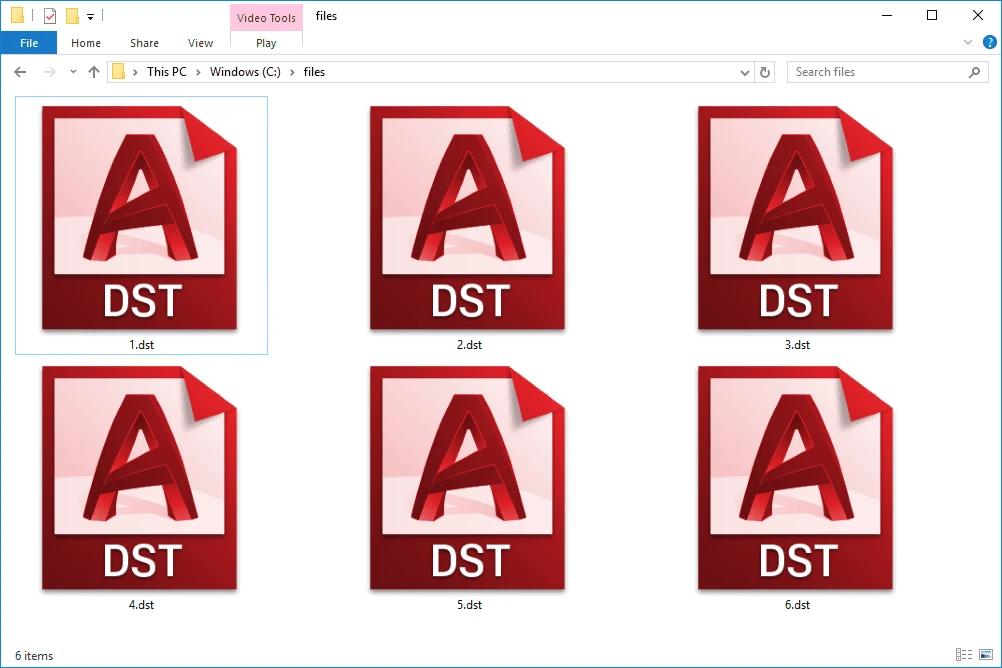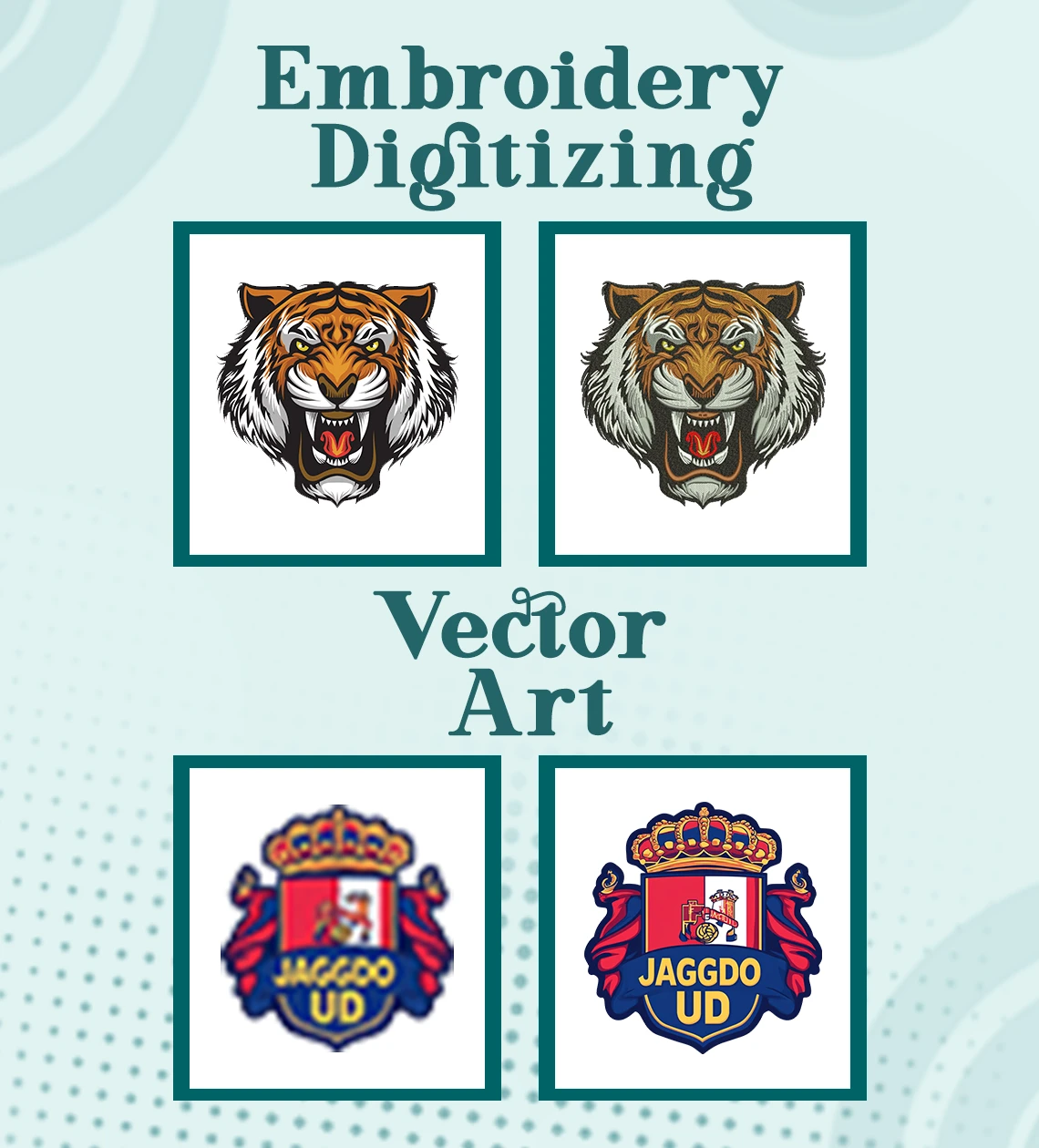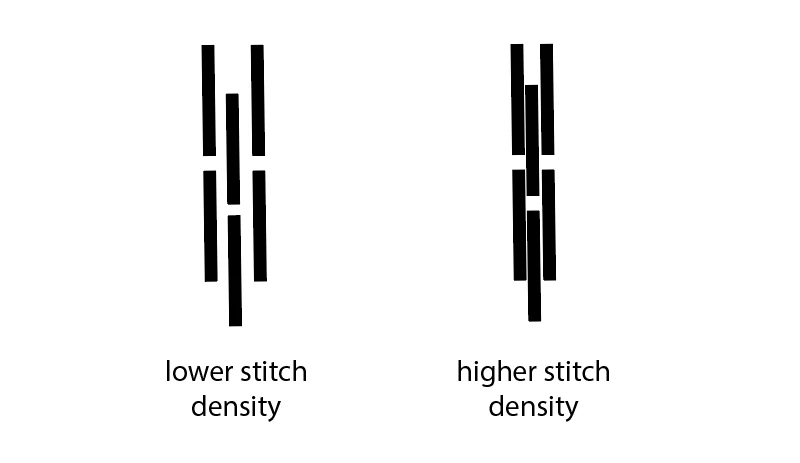

The DST (Data Stitch Tajima) file format is widely used for embroidery patterns, developed by Tajima to encode design information such as stitch types, lengths, and colors. This format is compatible with different embroidery machines, allowing designers to simply share and recreate designs. DST files are preferable because they give accurate stitch path instructions that ensure consistent results across machines.
Creating a DST file requires embroidery digitizing software that can convert an image or vector file into an embroidery-compatible format. Here is a step-by-step guide:
Choose a Design: Start with a clear image or logo you want to digitize. High-resolution images work best.
Import into Digitizing Software: Use embroidery software like Wilcom or Embird. These tools allow you to set stitch types and directions.
Set Stitch Parameters: Select stitch type, density, and sequence based on the design complexity.
Convert to DST Format: Once the design is completed, save or export the file as a DST. This file can now be uploaded to an embroidery machine for stitching.
True Digitizing offers professional digitizing services that ensure accurate and efficient DST file creation for all design types.
To learn more about the best machine embroidery tools, click here.
Understanding the DST file structure is beneficial for troubleshooting and making edits. DST files are binary files with encoded information about each stitch, including:
This structure allows embroidery machines to interpret and reproduce designs accurately. Every element ensures that the design’s details are stitched correctly.
Once your DST file is ready, downloading it to your embroidery machine is simple. Most digitizing software adds an option to export or download the DST file. Follow these steps:
Connect to Your Machine: Use a USB drive or a direct computer connection.
Export File to USB: Save the DST file to a USB or other compatible storage device.
Upload to Machine: Insert the USB into your machine and locate the file.
Select and Start: Choose the design and initiate the stitching process.
Yes, many software options are available to work with DST files for embroidery, from creating to editing and converting. Some of the best ones include:
Wilcom: Known for advanced features and high precision, ideal for professionals.
Embird: Affordable and versatile, suitable for beginners and experts.
Hatch: User-friendly interface, suitable for hobbyists and small businesses.
This software helps you to create DST files, make adjustments, and add personal touches to your designs.
Efficiently managing DST files requires specialized software designed to streamline workflows and enhance precision. Below is an overview of three popular tools used in the embroidery digitizing industry, highlighting their features, user interface, and functionalities:
EmbroideryWare is a budget-friendly yet feature-rich option for managing DST files.
Customizable stitch types and patterns for intricate designs.
Real-time simulation to preview stitching accuracy.
Tools for adjusting stitch density and pathing.
Clean and intuitive layout, making it beginner-friendly.
Quick access to essential tools like stitch editing and file conversion.
Supports DST creation and editing with precise control.
Export options for various embroidery file formats.
Layer-based design capabilities for complex projects.
BuzzXplore is an advanced embroidery management tool, ideal for organizing and editing DST files.
File browser to organize and preview embroidery files efficiently.
Conversion capabilities for multiple formats, including DST.
Batch editing options for large-scale projects.
User-friendly navigation with drag-and-drop functionality.
Built-in design viewer for quick previews.
Allows direct connection with embroidery machines for seamless file transfer.
Search and filter options to locate designs easily.
Color management tools to ensure thread consistency.
Wilcom TrueSizer is a powerful tool widely used by professionals for managing DST files with high accuracy.
Advanced resizing capabilities without losing stitch density.
Supports multi-format file conversion, including popular formats like PES and JEF.
Cloud-based storage for accessing designs remotely.
Polished and professional layout, suitable for advanced users.
Offers easy access to resizing, previewing, and editing tools.
Compatible with all major embroidery machines.
Offers stitch recalibration for high-quality output.
Provides detailed stitch statistics for analysis and refinement.
At True Digitizing, we offer quick turnaround times, guaranteed quality, and the option to preview your design before making a payment. We ensure you get exactly what you need. We are committed to delivering the best results every time. What are you waiting for? Contact True Digitizing today and experience the difference in quality and service.

Embroidery machines rely heavily on DST files to produce accurate stitching patterns. Here's how they interact:
File Compatibility: Embroidery machines read the encoded data in DST files, interpreting stitch positions, types, and sequences to replicate designs.
Seamless Integration: Modern machines, like Tajima and Brother models, are equipped to handle DST files directly, ensuring efficient file transfer via USB or direct connection.
Real-Time Adjustments: Some advanced machines allow for on-the-go stitch density and thread color adjustments, using the DST file as a reference.
Precision Execution: By adhering to the detailed instructions in DST files, embroidery machines deliver consistent, high-quality results every time.

Stitch density plays an important role in embroidery quality and durability. Stitch density is encoded in the DST file format to ensure proper design execution across different fabrics. It refers to the number of stitches in a given design area. Higher density is used for thicker fabrics, while lower density suits lightweight materials.
Adjustments in stitch density ensure optimal thread coverage without puckering.
Different stitch types, like satin and fill stitches, are configured with specific densities for the best visual outcome.
Always preview density settings before exporting the DST file.
Balance density to avoid thread breaks or excessive fabric tension.
Proper density settings reduce strain on the embroidery machine and ensure smooth operation.
By leveraging these tools and techniques, you can maximize the efficiency of your embroidery digitizing process and achieve impeccable results.
When it comes to converting files to DST, the choice of software matters. Below are popular options with high conversion accuracy:
Ink/Stitch: Free, open-source extension for Inkscape, good for basic conversions.
SewArt: A versatile converter that supports different file formats.
Embird: Not only for digitizing but also for precise file conversions.
Every software has unique features, so choose one based on your project’s complexity and budget.
Do you know how to convert jpg to pes? Click here.
To achieve optimal results with DST files, follow these best practices:
Use High-Quality Images: Start with a clear and detailed image.
Select Appropriate Stitch Types: For intricate designs, use satin or fill stitches as needed.
Adjust Stitch Density: Lower density for lighter fabric, higher for heavy fabric.
Preview Before Saving: Use software previews to catch any mistakes.
Export as DST: Save in DST format for seamless embroidery machine compatibility.
By following these steps, you’ll create a DST file that ensures high-quality and durable embroidery results.
Do you know how to improve embroidery digitizing quality? Click here.
Understanding DST files is important for any embroidery lover who is looking to produce high-quality, machine-compatible designs. Understanding these fundamentals can help you get better outcomes while creating, converting, or editing these files. True digitizing simplifies this process by providing expert digitizing services for accurate DST files. You can trust us for precise, high-quality DST conversions that bring your designs to life.
Nick William has been immersed in the world of embroidery digitizing for over 20 years, earning 25 industry awards throughout his career. As a 3rd generation embroidery expert, Nick’s journey started in his family’s workshop, where he learned the art of digitizing before the rise of modern software. He has worked with leading commercial embroidery businesses and has shared his expertise with over 75,000 home and professional embroiderers. As an author at True Digitizing, Nick is passionate about teaching others how to create beautiful, precise designs through easy-to-follow tutorials and expert advice.
Categories

How To Create A Vector File: Step-by-Step Guide
15-04-2025

What Is A Vector File? Everything You Need To Know
14-04-2025

Best Janome Embroidery Machines You Need to Check Out in 2025
11-04-2025

Custom Embroidery Digitized Designs For Hoodie Lovers
10-04-2025

Best Embroidery Patches For Your Clothes
10-04-2025

Professional Online Photo Digitizing Services Provided by True Digitizing
09-04-2025

Best Babylock Embroidery Machines For You
09-04-2025

Barudan Embroidery Machines: From Beginners to Professionals
04-04-2025

Custom Sweatshirt Embroidery Digitized Designs By True Digitizing
03-04-2025

Why Brother Embroidery Machines are the Best Choice for Embroiderers?
27-03-2025